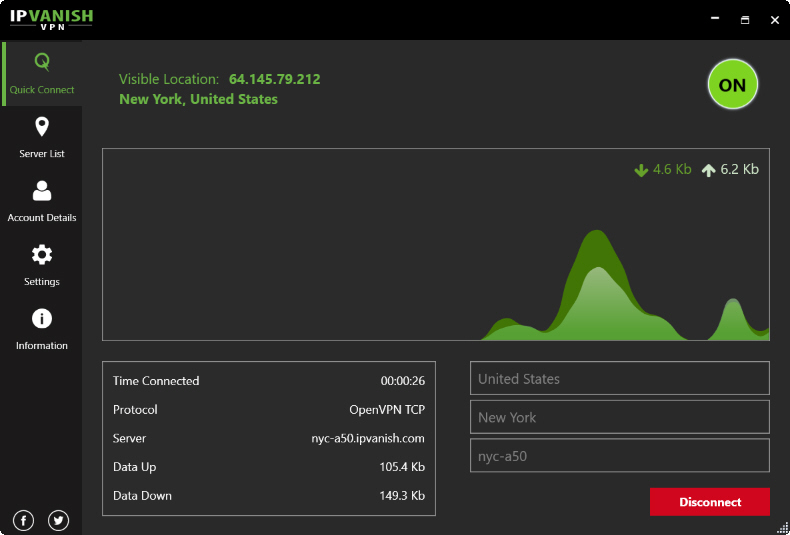

In settings, you can enable the kill switch that shuts down your Internet connection if the VPN gets disconnected and have IPVanish change your IP address every 45, 60, or 90 minutes. IPVanish supports OpenVPN, PPTP, and L2TP protocols. Unlike the sort feature, the filters for VPN protocol, latency, and country worked as advertised. There is a map view, however, which is helpful for finding a server. I couldn’t sort the list by any other way than country. I was disappointed, however, to find that the response time and load sorting options didn’t seem to work in my testing. The desktop app lets you sort the list by country, response time, and load. You can browse the list of servers by country and for each, the IPVanish desktop client reports an estimated ping and load to help you find a fast server. It has more than 750 servers in 60 countries. Like the other VPNs I tested, IPVanish lets you choose a particular server to connect to or have it automatically connect to what it deems the best connection. FeaturesiPVanish’s desktop app is well designed and easy to use. It can even be installed on some routers.
#Ipvanish login for android#
IPVanish supports Windows PCs, Macs, Linux, Chromebooks and has mobile apps for Android and iOS. For any of these plans, you can use up to five devices simultaneously. Payment options include Credit card, PayPal and Bitcoin. It offers a seven-day money-back guarantee to let you try the service. It offers three plans: it costs $10 per month if you sign up for one month, $8.99 a month for three months, or $6.49 a month for one year. IPVanish is one of the more expensive VPNs.

PricingAll of these features, however, come at a price.


 0 kommentar(er)
0 kommentar(er)
